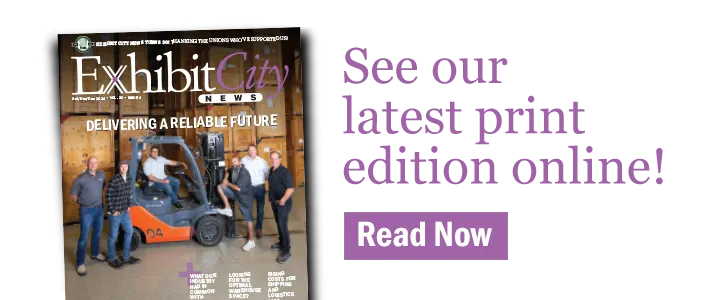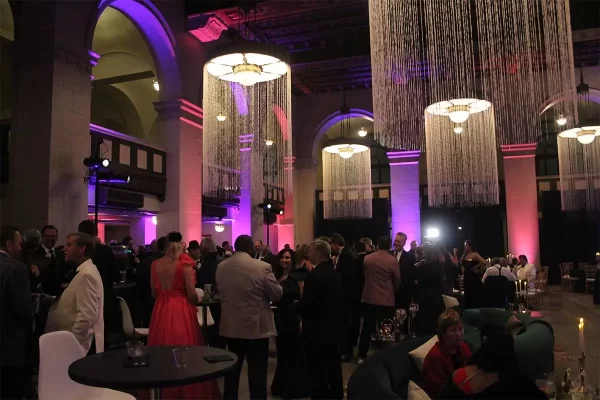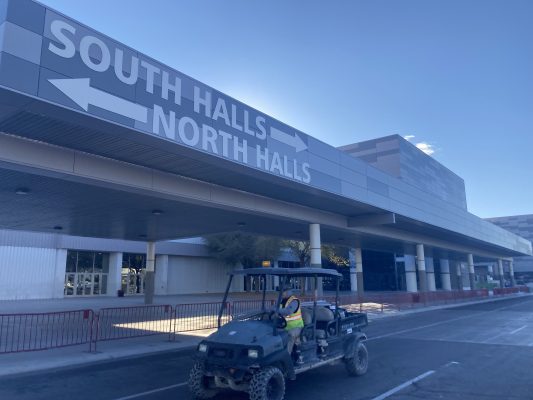What’s Next for the Live Event Industry?
by Chris Kappes, Exhibit City News
Forecasting the future of live events can feel like predicting the weather—a mix of sunny optimism with clouds of uncertainty. At CEIR’s Predict Conference, industry leaders gathered to explore what’s ahead as live events rebound from recent challenges. Held at the MGM National Harbor last week, the event featured insights from economists, futurists, and AI innovators, all agreeing that the future looks promising but with potential storms looming.
A Resilient Industry Facing New Challenges
The live events industry has shown incredible resilience post-pandemic. Adam Sacks, President of Tourism Economics, reported that the industry has regained 91 percent of its pre-pandemic levels in attendance, net square footage, and revenue. Travel spending has even surpassed 2019 figures, with air travel up by 6 percent. Yet, this recovery is not without concerns. U.S. hotel demand has stagnated, and consumer spending is outpacing income, suggesting a slowdown by 2026-2027.
A key challenge lies in the “bifurcated” economic landscape. Higher-income households are benefiting from wage increases, while lower-income households are struggling. This disparity matters as the wealthiest 13 percent of U.S. households contribute to 45 percent of total spending. Despite these risks, business travel is on the rise, signaling strong demand for in-person events.
Global Shifts and Their Impact
Geopolitical risks are reshaping how businesses approach live events. Dane Chamorro, a partner at Control Risks, noted that conflicts in the Middle East, energy struggles with Russia, and technological rivalry between the U.S. and China are disrupting supply chains and business strategies. However, these disruptions also create new opportunities for countries like Vietnam, Mexico, and Indonesia, which are benefiting from shifts in global trade. Chamorro advised companies to stay vigilant, as crises and opportunities are now more intertwined than ever.
Planning for an Uncertain Future
Matt Carmichael, Senior Vice President at Ipsos, emphasized the importance of foresight in navigating the unknown. Major trends like population shifts, the gig economy, climate change, and AI are reshaping the industry. AI’s growing influence in the workforce has sparked concerns about job displacement, but Carmichael believes the workforce is already evolving, with employers and employees needing to adapt.
Political polarization in the U.S. also poses risks for industries, including live events. Carmichael warned that AI could amplify societal divisions if not managed carefully, exacerbating inequalities and conflicts.
AI: An Ally, Not a Replacement
The future of AI in live events was a major focus at Predict. Noelle Russell, a leading AI innovator, portrayed AI as a tool that complements human creativity, not a replacement for it. AI excels at handling high-value, low-complexity tasks, freeing up workers to focus on more strategic, creative endeavors. However, Russell urged the industry to adopt AI responsibly, ensuring it enhances experiences without displacing the people who make them special.
The Rise of Generative AI
Generative AI, which creates text, images, and videos from vast datasets, is already transforming industries and is set to impact live events. Sean Watson of Trend Hunter shared that the global AI market is projected to reach $4.4 billion by 2027, bringing profound changes to the industry. While AI may take over repetitive tasks, human workers will still be needed for creativity and high-level decision-making.
Watson stressed that as AI use grows, businesses must remain agile and ready to adapt to the changing nature of work.
Dr. Sam Potolicchio’s Take: Navigating Divided Politics
Dr. Sam Potolicchio, President of the Preparing Global Leaders Forum, provided a thought-provoking take on how the divided U.S. political climate will shape the future of live events. With 73 percent of the electorate expressing dissatisfaction with the state of the country, Potolicchio argued that the coming years will be marked by deep political divides, complicating decision-making for businesses.
He emphasized that key moments and charismatic leadership will be pivotal in shaping political outcomes. Betting markets, according to Potolicchio, often provide clearer insights than traditional polling. Current odds (at the time of publication of this article) show a narrow lead for Kamala Harris over Donald Trump, with a divided government—where neither party controls both the House and Senate—likely to emerge in future elections.
Potolicchio’s insights underscore the need for live event professionals to stay informed and adaptable. In a politically turbulent environment, even small events can have major impacts, and businesses must be ready to respond quickly to shifts in public sentiment.
Looking Ahead: A Mixed Forecast
The Predict Conference painted a nuanced picture of the future for live events. On the one hand, the industry has shown remarkable resilience, recovering 91% of its pre-pandemic levels. On the other, economic slowdowns, geopolitical shifts, and the rise of AI present both opportunities and challenges.
Adaptability will be key to moving forward. Embracing technology responsibly, staying attuned to economic trends, and being prepared for political shifts will be crucial for success. While there are clouds on the horizon, there’s also plenty sunshine ahead for those who are ready.
































